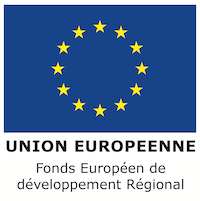In plants, RNA interference (RNAi) is the main defense against viruses. This antiviral mechanism is driven by small interfering RNAs (siRNAs) derived from viral RNA in infected cells. To thwart the plant’s RNAi machinery, viruses have evolved many strategies. Marco Incarbone and his colleagues have highlighted a new tactic: using peroxisomes to efficiently sequester siRNAs and neutralize their long-range movement. This work was published on June 19, 2017, in the journal Nature Plant and is highlighted in the News & Views of the same issue.
In an infected plant, siRNAs of 21 and 22 nucleotide (nt) length are generated from viral RNA. These siRNAs lead to the specific destruction of viral RNA in the infected cell, but they can also move long distance in the plant to immunize healthy cells. As part of the arms race between plants and viruses, most viruses expressed suppressor proteins (viral suppressors of RNAi, or VSRs). VSRs are typically multifunctional proteins that can disrupt different steps of the RNAi mechanism.
The P15 protein of Peanut clump virus is a VSR that binds 21 and 22 nt siRNAs to inhibit intracellular RNAi. In addition, P15 carries a peroxisome targeting signal that is not required for the inhibition of intracellular RNAi, but which is essential for propagation of the virus in the plant. Seeking to dissect these various functions of P15, the authors showed that P15 has a lower affinity for 21 nt siRNAs. To compensate for this weakness, the P15 protein and the siRNAs with which it associates are transported to peroxisomes, confining these mobile antiviral molecules inside these organelles. The virus can then move within the plant to infect other cells. This novel strategy exploits the ability of peroxisomes to import folded proteins and reflects the diversity of mechanisms used by viruses to thwart plant defenses.
Do peroxisomes simply sequester siRNAs, or do other processes occur in these organelles that affect RNAi? What other viruses (e.g., rotaviruses that cause infantile gastroenteritis) use this peroxisome-based sequestration strategy? These are among the questions that remain to be explored.

Figure legend:
(Top) In plants, upon virus infection, antiviral siRNAs, produced by DCL4 and DCL2, trigger destruction of viral RNA in infected cells but also in neighbouring cells, thanks to their movement.
(Bottom) During PCV infection, P15 binds antiviral siRNAs and delivers them into peroxisomes. This organellar confinement efficiently prevents siRNA movement and promotes viral spread.
Read more :
Incarbone M, Zimmermann A, Hammann P, Erhardt M, Michel F, Dunoyer P.
Neutralization of mobile antiviral small RNA through peroxisomal import.
Nat Plants. 2017 Jun 19;3:17094.
doi: 10.1038/nplants.2017.94.















